Ahoy, squirts! Quint here. Today marks the release of Disney's The Jungle Book on Blu-Ray, which is cool for me because that meant I got to jump on the phone with a couple people who helped make the movie. I've already posted my chat with star Neel Sethi and now I have something a little nerdier for you guys.
Christopher Glass was the production designer on The Jungle Book. You don't often hear from these guys, but knowing how atypical this production was I thought he'd have some solid insight on how The Jungle Book came together. And he absolutely did.
A production designer is responsible for the design and building of sets and props, so how does a production designer do his or her job on a film that is done almost entirely against bluescreen? You'll see that Glass was even more hands on here than he has been on a regular production.
Oh, and Glass just finished work on The Dark Tower, so you better believe I asked him about that process, too.
This one is a real deal nitty-gritty behind the scenes look, not the typical light and airy talk. I find it fascinating and I hope you guys will, too. Enjoy!

Quint: It's a pleasure talking to you. We don't often get offered the chance to talk with Production Designers. As someone who grew up reading about the behind the scenes of movies in mags like Fangoria and Cinefantastique, it's really cool to get the chance to talk to a production designer.
Christopher Glass: That's how I wanted to get into what I do, from all those magazines like Cinefantastique and Starlog.
Quint: So this movie is set in a jungle yet was shot 100% in downtown Los Angeles. That must have made your job a little more challenging than normal. Most people should know that production designers are responsible for the look of sets, how the props are arranged and stuff like that, but this particular movie is a little different. Maybe you can talk a little about the differences of working on this film versus a standard movie.
Christopher Glass: It's definitely an unconventional way of making a movie, although I think very soon at least aspects of it will become more and more conventional. I think that will be one of the several legacies of this movie, just the process.
On a normal movie there's a lot of work to do. A lot of work to do. The Production Designer and the Art Department have to design sets, build sets, find locations, augment locations, build props, design props, sometimes you design characters and creatures. On this movie we had some practical props, some set pieces, but they were very limited and they were designed after we had already shot a version of the movie.
We had at least three versions of the movie. At one point it was all drawings, like storyboards, and from that we built virtual sets. We had a virtual art department, actually. It was all one department, but we had to divide it into two segments. There was the virtual art department and then the more normal art department, which was doing stuff like set construction, but they all overlapped and inter-worked together.
We built virtual sets in 360 degrees. It's very much like building environments for a video game like Skyrim or The Last of Us. It wasn't quite that level of rendering, but it was something closer to video games from about 6 years ago. Based on the storyboard version of the movie we built environments that could possibly be used and we actually scout them. It's like we would build locations and then with Favreau we'd go scout them with video game controllers. He's a gamer and he loves the Xbox controller.
The technology we used for this, without getting too technical, had three layers. It was Motion Builder, it was Maya and then there was another layer called Proton, which was actually made by Microsoft who made Halo and it uses a lot of the same rendering and world-building techniques as Halo.
Anyway, we'd build these locations and then scout them. “This would be a cool camera angle here.” “Mowgli should run through here.” “Maybe we should add a big log here or make this tree a little bit bigger.” We'd put in proxies, digital versions of the animals and Mowgli. We called them chess pieces. That's how we designed all the sets. We used virtual lenses to approximate real lenses.
It sounds crazy, but we kind of carved the world out of stone, like a sculptor. You'd have this big slab of rock, a world in which you can do anything, and then you start carving at it and as you're carving at it you start finding veins and things in the rock and go “Oh, maybe we should go in this direction.”
We tried to create some happenstance, so things could happen a little randomly without us designing literally everything and then we'd riff off of that.
From that we created another version of the movie with Motion Capture. That actually had Neel (Sethi), who had never acted before, there and it was actually the perfect scenario because it gave Favreau a chance to do a complete run through of the whole movie with Neel before we actually went to principal photography. We did that on a motion capture stage, which are what people are used to seeing on stuff like Avatar, the gray triangles and shapes and things approximating the landscapes we created on the virtual world.
We'd have stand-ins for animals. We tried having two people stand-in for the quadrupeds, with one guy being the front lets and the other guy being the back legs... it worked occasionally. The information we got from the motion capture was used mostly just for blocking for the animals so the animators could start their work and begin finessing it. Neel was doing his thing, so we had a version of the movie that we started editing, actually.
We then had a version of the movie that looked like pre-vis or low res animation and from that we'd figure out where Mowgli was walking in a scene and what he's touching. From that we determined how much actual physical set we would build, based on the pathways Neel made (during the Motion Capture pass). So basically Neel decided how much set was built.
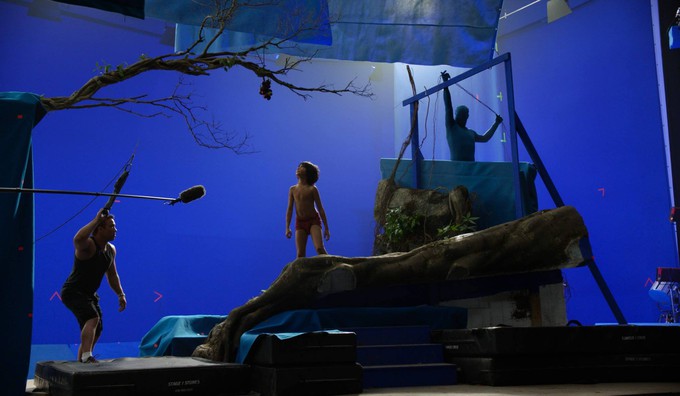
Quint: I know Favreau was adamant that Mowgli always be touching something real. His feet were on a real, solid surface, he'd grab a real branch, etc, so it didn't look like he was floating unnaturally. He did the same with with Zathura, where the robot performer had green tights on, but wore practical robot feet so it looked like this thing was actually interacting with the environment.
Christopher Glass: What you want to have is real interaction. It was hard for Neel especially because he wasn't really wearing anything but his loincloth. Everything about this movie was difficult. There were so many variables that could have made things go wrong. We had a kid and had shoot limited working hours. There were safety issues. He couldn't be more than 30 inches off any platform, but he's doing all these stunts, but you can't really rig him because he's almost naked. There's no place to hide the wires. Everything was working against us and it's kind of a miracle that we pulled it off.
You want interaction, but also you want shadows as much as you can. Sometimes we'd build sets where it'd be offset to one side because we knew where the light was coming from. Bill Pope actually lit the pre-vis stage, so we'd know which direction the light was coming from, where the shadows were going to hit and we incorporated that into how much set we were going to build so we could capture as much of the shadow hitting plants and rocks and whatnot.
Also, the kid's not a trained actor, so you want him to have something to interact with. It's a daunting task for anyone to act against all blue. There were sets we had that were all blue with nothing, but always tried to give him something, even if it was just an eyeline with one of the Jim Henson puppeteers acting out the characters.
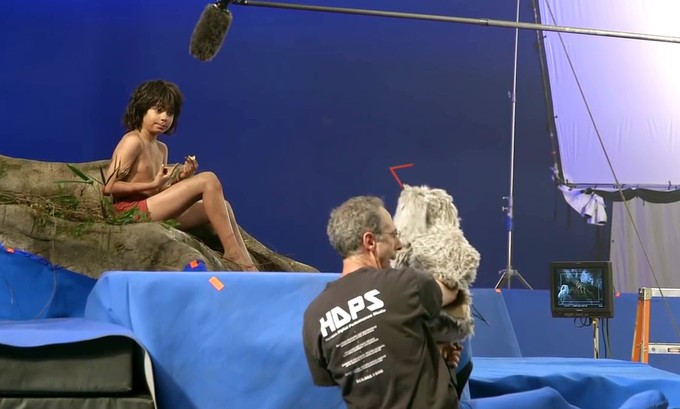
I've never seen a movie where you have the director of photography on almost from day 1, you have me, the production designer, and we're scouting while lighting and editing at the same time. All in pre-production! The editor's already cutting scenes in pre-production, so we got to work closely with the editor and that would dictate the kinds of sets we'd need. That's not something you normally do on a movie. I stayed on through 8 months of post production, which is not usual for a production designer.
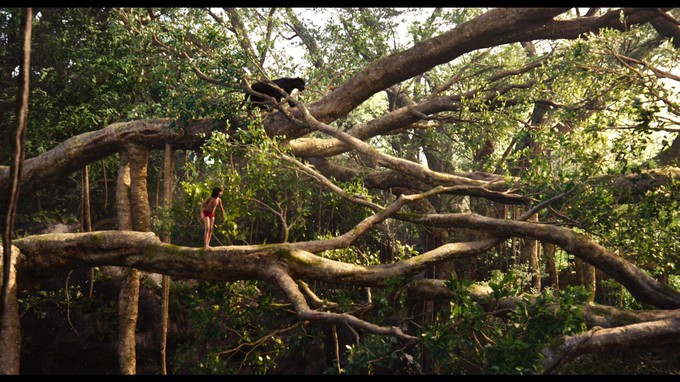
There were actually scenes we shot with Mowgli running through trees and we discovered we needed real branches because all the fake branches we made never had the real physics of the bending, especially for the final battle when they were in the trees. We needed the real physics of real branches. We tried metal and PVC and a mixture of wood and PVC. That didn't work, so we just got real branches.
I'm very proud of this film. It's the best work I've ever done.
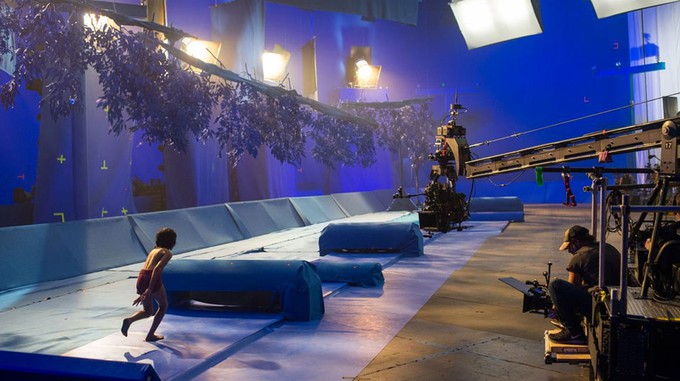
Quint: You should be proud, it's a gorgeous film and a real audience pleaser. Before I let you go, I have to ask you a little bit about something that's a huge passion of mine. It started when I was in Middle School and I found a book called The Gunslinger in my school library. You just finished work on The Dark Tower movie. Production design is one of the key things that sets tone for a film. That means you had one of the toughest jobs on this project because the story itself is a mashup of a bunch of different genres, western, horror, sci-fi, fantasy, post-apocalyptic, etc. How did you crack so the tone was something unique without being too all over the place?
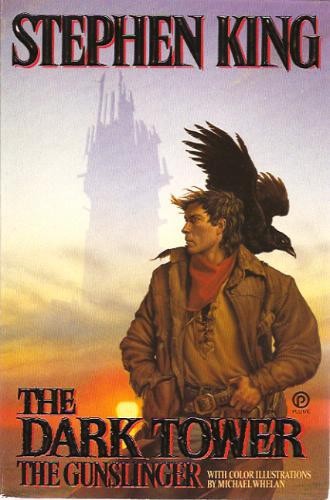
Christopher Glass: There was a lot of exploration in terms of concept art and finding references, working with Nik (Arcel), the director and looking at stuff. There were some people who were avid fans and I'm not a rabid fan. I'm a fan, but I'm not like you, I didn't grow up with it. The director did.
It was a huge challenge, but we ended up creating a litmus test. Not consciously... we didn't say, “here's our litmus test!” We didn't list it out, it was more like “Do we buy that? Are we trying too hard? Is this going too far?” We did something something similar on The Jungle Book. How far do you go with the anthropomorphizing animals?
You have to have some restraint, so we were trying to find that restraint to give the audience something they relate to, but it is slightly tweaked in a way that doesn't take it too fantastical and too crazy so you're like “Okay, it's just another CG fest.” You gotta be careful that you don't let the technology and the blank canvas overwhelm you and take over. “We can do anything, so let's just make it go crazy!”
Blending all these genres is difficult, but I think we did a pretty darn good job. I guess you'll be one of the people who will figure out if we did it successfully or not when it comes out next year! It was a tricky balance. You don't want it to be kooky. I mean, I like steampunk, but I don't think that's right either, for a movie like that.
At a certain point we got it. “This is our movie, this is not our movie,” and it came quicker. It's all about world-building. I know that's a phrase that's overused, it's like a buzz phrase for filmmaking and video games, but it's kind of true in some way. We are building slices of a world for people to peek into and hopefully be transported into. With Jungle Book that was absolutely our main mission, at least my main mission, was to create a world that was believable, but also fantastic, but not so far that it became Malificent. I'm not knocking Malificent, it's just a different kind of movie. We wanted to have real physics in a real world.
I think The Dark Tower is kind of the same. I mean, The Dark Tower is so different from The Jungle Book, but I applied a lot of the same theory behind the design of it in terms of trying to make things more real and not go too far in different directions. It doesn't lean too far horror or too far this way or that way. Hopefully it works. I think it does, but we'll see.
Quint: Perfect, thanks a lot for you time! Oh, and if you happen to have any of Roland's guns laying around and need a home for 'em you know where to send them.
Christopher Glass: (laughs) I think they're all spoken for!
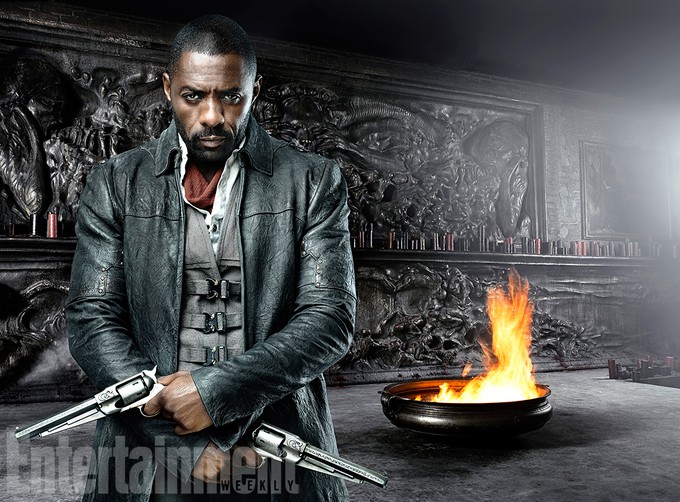
There you have it. Jungle Book is out now on Blu-Ray. Thanks to Chris for putting up with my Dark Tower geekery and to Disney for not getting too mad that we went over our time by ten minutes.
-Eric Vespe
”Quint”
quint@aintitcool.com
Follow Me On Twitter

